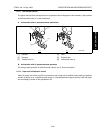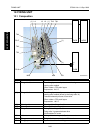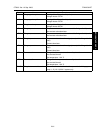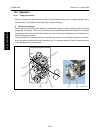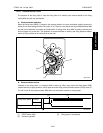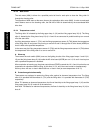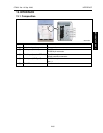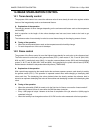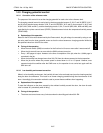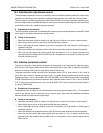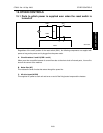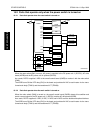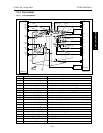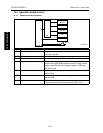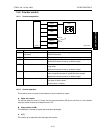
CF5001 Ver.1.0 Sep. 2003 IMAGE STABILIZATION CONTROL
2-67
II UNIT EXPLANATION
14.3 Charging potential control
14.3.1 Correction of the reference value
The purpose of this control is to set the charging potential for each color to the reference level.
The charging potential control is carried out by the drum potential sensors /Y, /M, /C and /K (DRPS Y, M, C
and K), drum potential sensor boards /Y, /M, /C and /K (DRPSB Y, M, C and K), drum motors /Y, /M, /C and
/K (M14, M15, M16 and M17), and the developing motors /Y, /M, /C and /K (M20, M21, M22 and M23), and
controlled by the printer control board (PRCB). Related sensors include the temperature/humidity sensor
(TEMP/HUM).
A. Explanation of the operation
Based on the DC bias value determined by the Dmax control, the grid voltage is corrected by using an out-
put value read from the drum potential sensor so that the value becomes a charging potential shifted by
the specified value from this DC bias value.
B. Timing of the operation
• When the main switch (SW2) is turned on for the first time in 6 hours or more after it was turned off.
• When the job starts 6 hours or more after the SW2 has been turned on.
• Every 1,000 pages of output. However at the time of completion of the job, when the 1,000th page is
contained in the job.
• When the humidity has changed more than 30% RH from the value measured at the last operation.
• When the job starts where the process speed is slowed down to 1/2 or 1/3 speed. However, once
operated under this condition after the SW2 turns on, the operation is not carried out again until the
SW2 turns off.
14.3.2 Low humidity environment correction
When in a low humidity environment, the humidity is lower in the enclosed area (near the cleaning section)
along the drum circumference. This result in an uneven charging potential along the circumference of the
drum. Accordingly, this correction method is used to prevent these conditions from happening.
A. Explanation of the operation
To ease the influence on the drum caused by the ambient humidity around the drum, the drum for each
color is rotated 45° periodically while in idling.
B. Timing of the operation
• The drums are turned once every 3 minutes when the humidity gets below 30% RH.



